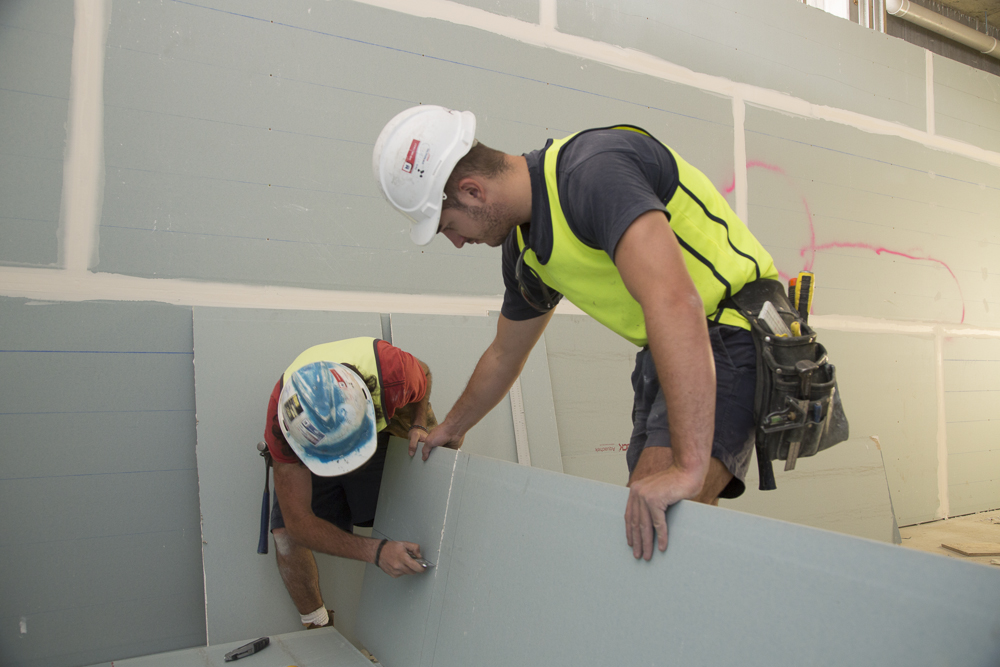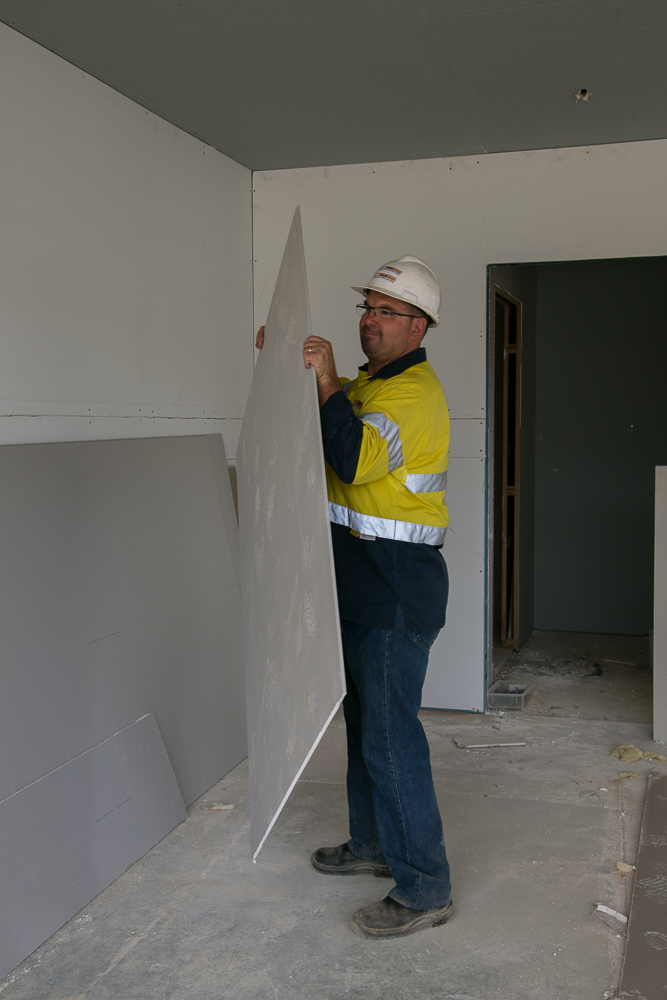Fibrous Plasterer
Also known as: Gyprocking.
Fibrous plasterers make, apply and fix the internal linings of commercial and domestic buildings. They usually work in dusty conditions.
| White Card | Asbestos Cert. | Drivers Licence | High Risk Work | 18 years + | |
|---|---|---|---|---|---|
| Fibrous Plasterers | yes | yes | no | no | no |
To be a Fibrous Plasterer you need to enjoy practical work and have good hand-eye coordination. You also need to be able to read and interpret plans and do neat and accurate work. Fibrous Plasterers sometimes work at heights.
Typical Duties
- measure room walls, work out plasterboard layout and install insulation and moisture barriers,
- measure and mark cutting lines on plasterboard – then cut plasterboard,
- lift and position panels, then nail, screw or glue them to walls, ceilings or wooden strips called battens,
- prepare corner beading panel mouldings, ceiling centres and other plaster fittings,
- cover joins and nail holes with wet plaster or sealing compounds and smooth them using wet brushes and sand paper,
- install fire-rated wall barriers, acoustic walls and treatments,
- spray fibrous materials over surfaces to be covered,
- make fibrous plaster molds in factories.
All construction workers need a White Card and Asbestos Awareness Training to work on a construction site in the ACT.
Check with your RTO to see if you are eligible for an ACT Training Fund Authority Subsidy, or if you are eligible to do an Apprenticeship.
| RTO Hours + Costs | White Card | Asbestos |
|---|---|---|
| 3 – 4 year apprenticeship or as trade assistant | 6 hours + < $500 | 4 hours + < $500 |
RTOs that deliver training for Fibrous Plastering/Gyprocking in the ACT:
Canberra Institute of Technology (CIT)
![]()
![]()




